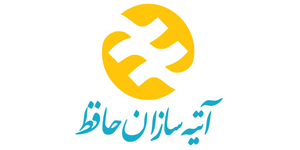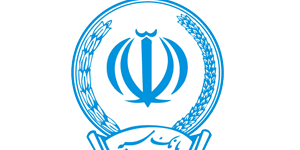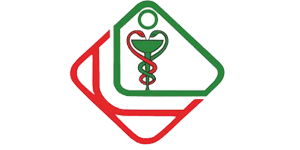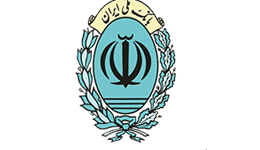IVF
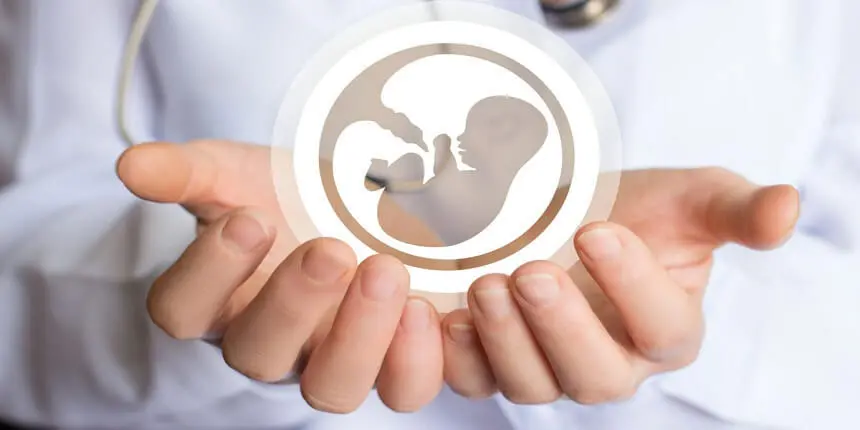
Yazd Madar Gynecology and Obstetrics (OB / GYN) Single-Specialty Hospital
Look at the In Vitro Fertilization (IVF) Process
- Preface
Scientists’ research shows that one out of every 8 couples does not get pregnant easily, but they can use assisted reproductive technologies such as IVF. In the process of IVF, one of the procedures to treat infertility, the female ovum and male sperm are fertilized in the laboratory environment and an embryo is formed. The embryo resulting from IVF can be placed inside the uterus or frozen and transferred in subsequent cycle according to the attending physician’s opinion.
There are various concerns such as the success rate of IVF, the cost of doing it and so on; therefore in this manual tried to provide the readers with necessary information in a concise and understandable procedure.
- What is IVF?
The term IVF means In Vitro Fertilization or, in other words, fertilization of ova in a laboratory environment. In this process, fertilization does not occur naturally inside the woman’s body, but inside a glass container in the laboratory.
- Who are chosen to do IVF?
- Women with blocked or damaged fallopian tubes
- Women with a history of Tubectomy and demanding for refertilize
- Women with severe endometriosis
- Women with unknown causes of infertility
- Male infertility (sperm disorders including low count (oligozoospermia), low motility (Asthenozoospermia) and abnormal morphology )
- Patients with a history of multiple unsuccessful treatments such as ovarian stimulation drugs, IUI, etc.
- In Vitro Fertilization (IVF)
Initial measures and evaluations are done before doing IVF, and according to be the attending physician’s opinion, sometimes it is necessary to perform several tests, which include:
- Counseling with the couple and getting their history and essential information
- Sperm analysis
- Performing uterine Sonographies to determine the health status of the uterus
- Performing hormonal test (Ovarian Reserve Test, etc.)
- Step-by-Step Descriptions of the IVF Procedures
Step 1: Ovulation Induction
Ovulation stimulation drugs are prescribed to obtain more ova and subsequently to form multiple embryos and increase the chances of fertility. These drugs are usually prescribed from the second day of menstruction after performing Sonography and ensuring that the uterus and ovaries are healthy. The growth process of the ova is followed by successive Sonographies, therefore, the patient may undergo Sonography several times at intervals of two to three days until the desired condition is reached and control of the treatment steps is done mainly through vaginal Sonographies and blood tests. When the size of the follicles reaches 18-20 mm in the Sonography images, the Human Chorionic Gonadotrophin (HCG) ampoule is prescribed for the final maturation of the ova.
Step 2: Ova Collection
Puncture, or popularly called ovulation, is performed with the help of Sonography observations through the vagina. In this procedure, by drilling the follicles, their contents including ova and follicular fluid, are removed from the vaginal route.
- Necessary Cares before Performing Puncture Procedure
1-Eating a light dinner at 7 pm and fasting from 12 pm until the time of surgery
2- Bathing and removing body hair, the night before the operation
3-Not using cosmetics and nail polish
4-Not having sexual intercourse for two weeks before the operation
5-Takin blood pressure, thyroid or heart disease medications as usual
Step 3: Sperm Preparation
On the day of ova collection, semen is prepared from the patient’s husband and after washing and preparation, healthy and very active sperms are isolated, and a number of these alive and active sperms are placed in a laboratory culture environment next to a mature ovum cell, then it is placed in labeled containers inside the incubator until fertilization takes place (IVF).
In the Intra Cytoplasmic Spermatozoal Injection (ICSI), a healthy and alive sperm is selected and injected directly into the cytoplasm of the mature ovum cell by a special needle. This procedure is recommended in cases where IVF is not successful or infertility problems related to the patient’s husband, and the probability of fertility increases.
- Necessary cares after performing puncture procedure
- Spotting after ovulation is due to the wound caused by removing the vaginal lining by the follicle removal needle. If the spotting is so much that it can fill the sanitary napkin with blood, patient must definitely inform the treatment staff.
- After removing the ovum, the patient is recommended to use Progesterone Supplements medicines in the form of injections or suppositories. It is very important that these drugs are used exactly as prescribed by the specialist for the patient, because it plays an important role in preparing the uterus for implantation.
- Abdominal pain and discomfort is normal; in case of mild pain, it should be improved using Acetaminophen tablets, but in case of severs pain, the patient must inform the ward nurse.
Step 4: Fertilization and Embryo Growth in the Laboratory Environment
The fertilized ovum is placed in a CO2 incubator with a temperature 37ºc; an environment that has the same conditions as the mother’s womb. Usually, on the third or fifth day after the discharge of ova, the embryos are ready to be transferred to the mother’s uterus. The formation of embryos, their number and quality will depend on the number and quality of ovum and sperm.
Step 5: Embryo Transfer into the Uterus (Embryo Implantation)
This step is done without anesthesia. In this procedure, the embryo are placed in a thin tubular device and transferred to the uterus through the vaginal route.
Considering the conditions of the uterus, the age of the women and the quality of the embryo, a suitable number of embryos, usually 2 to a maximum of 3 ones are transferred into the woman’s uterus, and after 12 to 14 days of the embryos transfer, a blood test can be used to determine whether a woman is pregnant.
- Nutritional Recommendations after the Transfer Operation (Implantation)
There is no special diet after embryo transfer and the patient is allowed to consume all foods.
- Pregnancy Test
The pregnancy test is done two weeks after embryo transfer by performing a blood test (serum measurement of Beta HCG hormone).
It is necessary to inform the head nurse of the ward of IVF operating room by phone number: +98 35-33182234 every morning (in the morning on non-holiday days from 8 to 11 o’clock) about the result of the pregnancy test.
Usually, if the test result is positive, the test is repeated 48 hours later to ensure the increase in the amount of pregnancy hormone in the blood.
If the patient encounters problems such as spotting, abdominal pain, decreased urine volume and so on, during this period, she must contact the emergency room doctor by calling phone No: +98 35-33182241.
- IVF Success Rate
The chance of success with IVF depends on various factors such as the causes of infertility, age and the equipment of the infertility center. For people under 35, the success rate of IVF is between 30 and 35 percent.
- IVF Cost
The cost of performing IVF in Madar Hospital is depended on the instructions of the Ministry of Health and the approved tariff, also in this center, the government support options is implemented based on the relevant regulations.
- Necessary Precautions after IVF Operation
- Medications Used after Embryo Transfer
Women who are undergoing IVF treatment and have done embryo transfer should know their medications.
Medications used after embryo transfer mainly include:
- Hormonal drugs such as Estradiol and Orogesterone
- Pharmaceutical Supplements
- Medications used by the patient in special conditions after embryo transfer, such as: Thyroid and Steroid drugs for people with Asthma and Lupus which they were already consuming.
Taking all these drugs varies due to the attending physician’s opinion and depending on the conditions of the patient.
- Travelling after Embryo Transfer
After embryo transfer, there is nothing wrong with traveling by any means, in any form and distance.
- Resting after Embryo Transfer
Having absolute rest after embryo transfer is not recommended. The main reason for not resting after it is that inactivity can increase blood clotting; in addition, there is no need to raise the legs. It is also safe to work after embryo transfer; women can go to work after this operation and there is no special reason for them to rest.
- Having Sexual Intercourse after Embryo Transfer
The sexual intercourse from 48 hours after embryo transfer is not prohibited.
- Health Cares after Embryo Transfer
After embryo transfer, the water used while bathing should not be too hot, and going to the Sauna and Jacuzzi is also prohibited due to excessive heat.
- Sleeping Positions after Embryo Transfer
There is nothing wrong with any type of sleeping position after embryo transfer according to the patient’s wishes. It is recommended to have 8 hours of night sleep every night, and 30-45 minutes of daytime sleep.
During this period, ways to improve the quality of sleep are recommended as follows:
- Creating best room temperature for sleep
- Taking a warm bath or shower before bedtime
- Stop drinking caffeine (Tea, Coffee) 4 to 6 hours before bed
- Listening to a soft music
- Stop using electronic devices (TV, laptop and Mobile phone) 30 minutes before bed
- Frequently Asked IVF Questions
- When are embryo frozen?
The large number of formed embryos , the risk of over-stimulation of the ovary in certain cases, the patient’s vaginal bleeding during or before the transfer, the presence of lesions such as polyps and myomas in the uterus, and not being transferring the embryo because of being cervical canal too narrow, all are factors that some of embryos are frozen and after solving the aforementioned problems, in another treatment cycle, a number of frozen embryos are removed from the frozen state and transferred to the mother’s womb due to the opinion of Embryologists and Gynecologists.( In the next treatment sessions, the process of ovarian stimulation and ovum collection will be removed).
- How often can IVF be repeated, if it is unsuccessful?
It depends on the patient. The first reason for delaying and creating a suitable opportunity for the patient to return to the normal menstrual period, which is about a month apart, is enough.
- Is there anything wrong with having sexual intercourse in two weeks between the start of IVF and the removal of the ovum from the ovary?
Having sexual intercourse while taking ovulation stimulating drugs may increase intra-abdominal pressure, rupture follicles and cause discomfort for the woman.
- How should the medicine be taken, if the pregnancy test is positive after IVF?
Considering the instructions, the use of prescription medicines should be continued for 10 weeks from the time of implantation, and after that, the patient should ask the Gynecologist or contact the center to know how to take the medicine.
- How to check the quality of the embryo during IVF?
Embryo formed during IVF cycle or microinjection is graded based on division speed, cytoplasm clarity and cell categories. Embryo with high rate of cell division, clear cytoplasm and less cell classification are of better grade and quality. When transferring, the Embryologist chooses the best embryo because it has a better time of implantation and less possibility of genetic defects.
- What does Ovarian Hypertimulation Syndrome mean after ovulation?
Ovarian Hypertimulation Syndrome (OHSS) after the ovulation procedure means an increase in the number of ova extracted from the ovary, in these cases the complications after the ovulation procedure may become more severe, for this reason the patient must be under the supervision of a specialist and often in this conditions the embryo transfer does not take place, because the more the patient is pregnant, the more likely this problem will be. Of course, excessive stimulation of the ovaries can also have mild conditions, the main symptoms of which are the pain in the ovaries, abdominal bloating and so on, therefore the specialist starts treatment according to the presence of the above symptoms.
- Can the success rate of IVF be lower than frozen embryo?
No. In addition, it is necessary to know that frozen embryos are not different from fresh ones in terms of the possibility of genetic defects, and the success rate of frozen embryos is comparable to fresh embryos.
- How to take medicine after a positive pregnancy test?
Medicines, in the form of injections or suppositories, should be continued in the same way for 40 days after implantation, and then to consult with the head nurse of the IVF operating room to continue the pregnancy process, call phone No: +98 35-33182234.
- What does using the PRP in IVF mean?
PRP is platelet-rich plasma that is sometimes recommended at the suggestion of the attending physician due to the problems caused by the thinness of the uterine lining. The platelets and growth factors in PRP stimulate the production of new tissue and increase the thickness of the endometrium (the inner layer of the uterus) and for this purpose, about 10 to 20 cc of the patient’s blood is taken and its plasma is separated; usually, 48 hours before embryo transfer, PRP is injected into uterus through a fine catheter. As a treatment method, the effectiveness of PRP has not yet been definitively proven, but it can be used as an adjuvant treatment.
- Can sneezing and coughing reduce the success rate of IVF?
No. Coughing and sneezing after implantation can not cause the embryo to be transferred or removed from the uterus, but if the patient has an allergy or a cold on the day of embryo transfer, be sure to consult an attending physician.
- What are the pre-transfer measures if the patient has a frozen embryo in the center?
Before transferring the embryo to the uterus, suitable and sufficient conditions must be provided to accept the embryo. To prepare the uterine endometrium, Estradiol and Estrogen drugs prescribed by the specialist and due to her/his order they are used, and on the 14th day of menstrual period, the patient returns to do Sonography and then to determine the day of implantation. After referring to the specialist, the embryo’s card is handed over to the IVF laboratory manager until the day of implantation and the necessary measures will be taken for the return of the frozen embryos.
- What is hatching?
One of the ways to increase the success rate of IVF is hatching, and in mothers who have previously had unsuccessful IVF or who are old and the success rate of IVF in them is low, this procedure increases the chances of pregnancy, and doing this depends on the specialist’s opinion. In the IVF method, after the transfer step, the embryo must attach to the endometrium and implanted to occur pregnancy.
About 70 to 80 percent of transferred embryos do not succeed in implantation and to increase the success rate, before transferring the embryos, a small fissure is created in the outer shell of the embryo, which is called Hatching.
- How many days is the duration of IVF treatment?
From the start of prescribing and receiving the drugs until the embryo transfer it takes about 3 weeks. First, fertility medicines are prescribed for about 2 weeks; during this period, the necessary tests and Sonography are performed to control the state of the follicles and the uterus. After these two weeks, ovulation is performed and then the patient is discharged, then two to three days after ovum and sperm fertilization, the embryos are implanted, and after two weeks from the time of implantation, a blood test is performed.
- May the IVF treatment period be canceled and not finished?
Unfortunately, not only do not all IVF cycles lead to pregnancy, some may be canceled for the following reasons:
- If the ovaries do not respond well to ovulation stimulation drugs or the number of developing follicles is low due to Sonography images, the treatment cycle may be canceled.
- If the ovaries are not sensitive to ovulation stimulation drugs, the normal number of follicles will grow, that is called IVF. In this case, the physiological condition of the patient is not suitable for embryo reception. Therefore, the ovum puncture is done and the ova are fertilized in the laboratory, but the resulting embryo is frozen and a few months later, the frozen embryos are transferred into the uterus, when the patient regains the right conditions,
- Not all follicles contain ova. The specialist may determine the appropriate number of follicles to perform the ovum puncture, by performing Sonography, but this is in a practical situation that these follicles are empty of ova and no ovum is obtained after ovulation.
 loading...
loading...![[company]](https://madarhospital.com//upload/logo-1575530599.jpg)












